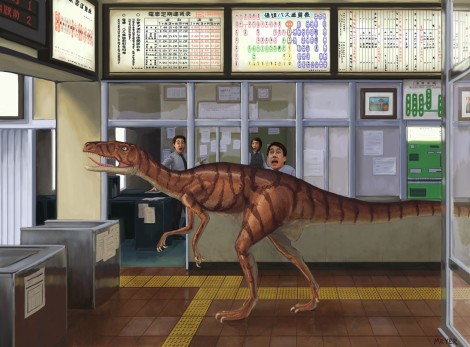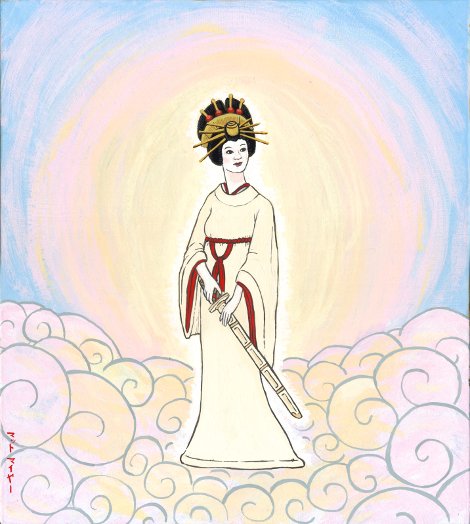I mentioned these paintings a little while ago but they’re finally dry enough now that I feel confident putting them on my scanner. These three landscapes were done of places around me in Japan where we took my family after they came to Japan for our wedding — the famous Todaiji down in Nara, the not-so-famous Mt. Hino in Fukui prefecture, and the even less famous teahouse Yokokan in Fukui city.

Yokokan, Fukui
I love this teahouse. It was burned down in the World War 2 firebombing of Fukui, but rebuilt in the 80’s when the foundations were discovered underneath a road. It’s in such a beautiful neighborhood, and it is one of the most tranquil places in Fukui prefecture. If you ever come to Fukui, you should go there.

Mt. Hino, Echizen
Also known as “the Mt. Fuji of Echizen province” (by I-don’t-know-who), Mt. Hino is a huge mountain that towers above Echizen and is always beautiful. If you’ve been reading my blog since I lived in Takefu, you’ll know that I’ve loved Mt. Hino since I first saw it. So this is one of my favorite views of the mountain, from the Hino river.

Todaiji, Nara
Todaiji is probably the most famous landmark in Nara. It’s an enormous wooden temple which houses an enormous seated Buddha. The park by Todaiji is famous for its tame deer which will walk right up to you and bite you over and over until you throw food on the ground and run away while they’re distracted.






